Five Burning Questions
Kenyon professors shed light on some questions that won’t leave us alone.
Read The StoryThese students are claiming their places in the workforce — interning in the industries they one day hope to share.
Story by David Hoyt ‘14 | Photography by Timothy Archibald, Howard Korn, Peter Murphy, Erin Schaff, Alyssa Schukar and Katarzyna Woronowicz
The intern. The bottom rung on the corporate ladder. Often unpaid, or even paying for the opportunity to work — if they’re lucky enough to afford such an arrangement. May spend an entire summer in a sweltering city far from home, paradoxically shivering in an over-chilled office. Subject to the whims of a demanding boss or, worse, relegated to making photocopies and coffee runs.
Or at least, that’s the popular perception.
Meet eight Kenyon students who are redefining the internship. They, like hundreds of their classmates, fanned out across the country this summer, clocking in to work in corporate towers, urban gardens and major league baseball stadiums. From conducting cutting-edge medical research to curating the world’s top museums, they gained deep knowledge and hands-on experience in the industries they one day hope to shape. Yes, they valued the opportunity to learn from their mentors — but they also learned when to speak up and how to make the most of these formative career experiences.
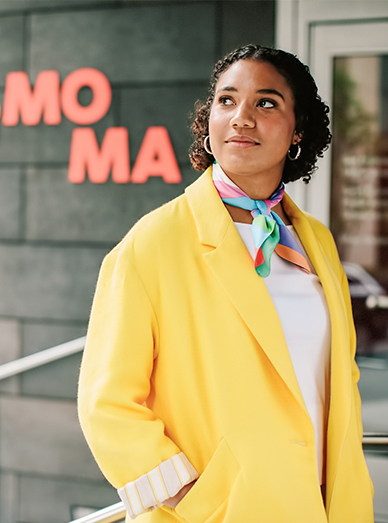
Painting and sculpture curatorial intern, San Francisco Museum of Modern Art // San Francisco
Erica Littlejohn ’19 always has been drawn to museums. “They occupy an interesting place in society,” said the studio art and Italian double major. They’re simultaneously a place of learning and entertainment, and the way we inter-act with them has changed dramatically in our increasingly digital society.” Growing up in California, she particularly was drawn to the San Francisco Museum of Modern Art because of the institution’s focus on diversity, inclusion and curiosity. “These values are reflective of what I hope to explore in my artmaking process and art historical studies.”
Daily duties: Littlejohn worked under two assistant curators in the painting and sculpture section of the curatorial department, researching specific artists and art objects in preparation for upcoming exhibitions and object rotations. “In short, I did a lot of fascinating reading,” she said.
Conversation pieces: “My knowledge of art history allowed me to contribute to in-depth conversations about art, particularly when it came to which artists could be in dialogue with one another for upcoming exhibitions,” said Littlejohn, who added that the research skills she gained in her art history lectures enabled her to find information about lesser-known works.
Speaking the language: Working as an associate at Kenyon’s own art museum, the Gund Gallery, familiarized Littlejohn with professional jargon from the field. “Understanding terms like ‘acquisition’ and ‘accession’ made me feel more comfortable at work because museums speak a particular language, which can be kind of intimidating or confusing if you’re not familiar with it,” she said. Her time at the Gund Gallery also gave her a preview of what to expect in meetings, including a sense of “when it is appropriate to offer ideas and when to hold back.”
Making connections: “Talk to people outside of your department. Even if that person is not doing the job you would like to do in the future, they may have some insight into how to get into your field of interest or they may know someone who is, in fact, doing the job you want. Or, you might just end up having a really interesting conversation with someone you would not have met otherwise.”
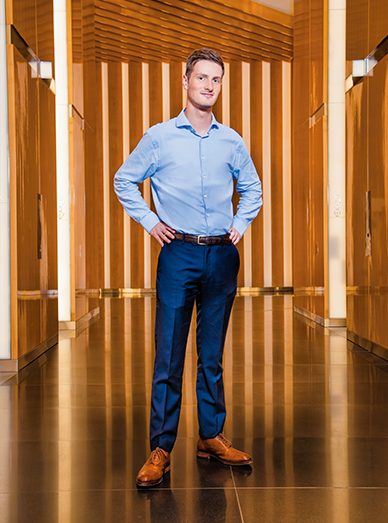
Marketing intern, L’Oréal USA // New York City
For George Halliday ’19, the sky-high offices of L’Oréal USA had more in common with the atmosphere of a Kenyon classroom than he originally expected. In both environments, he was expected to demonstrate curiosity and ask a lot of questions. “L’Oréal wants interns to give their input on business problems and provide a fresh perspective, which I felt empowered to do,” said the sociology major from Charlottesville, Virginia. “I also think working closely with professors at Kenyon made me more comfortable interacting with managers and those more experienced than I was.”
Summer do: Halliday worked on the L’Oréal Paris hair color operational marketing team, which handles bringing a hair color product to market after it has been developed in the lab. His focus was to come up with a merchandising solution the marketing team could use when working with retailers to organize hair color on the shelf. He worked with employees across departments and presented his proposal to marketing and human resources executives.
Looking to network: L’Oréal’s summer marketing internship caught Halliday’s eye when it was featured in a job newsletter from Kenyon’s Career Development Office. “L’Oréal stood out to me as an organization that empowered its interns to network within the company and get to know as many people as possible,” he said, adding, “I was expected to speak up and contribute to my team’s problem-solving efforts.”
The sociology of beauty: “My interest in sociology has fueled my curiosity about how consumers make meaning out of products that are integral to their everyday lives. Unlike a lot of other personal care products, beauty products are connected to a lot of emotions, which means consumers are extremely engaged.”
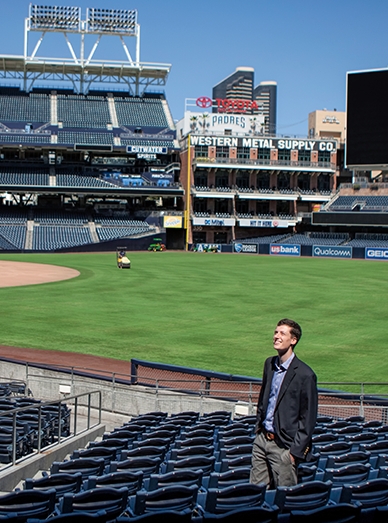
Marketing, content and creative services intern, San Diego Padres // San Diego
Lifelong baseball fan Jack Marino ’19 accepted a marketing internship with the San Diego Padres for a behind-the-scenes look at running a major league baseball team. “As someone who wants to break into the industry, marketing made the most sense because it’s an all-encompassing, total exposure to the entire business,” said the economics and math double major from New York City.
Advanced stats: Marino relied on skills acquired in his math and economics classes to research how the Padres used email marketing to attract fans to Petco Park. “I’m going through very granular data using RStudio, a statistical computing software that I learned at Kenyon,” he said. “Being able to communicate very specific findings in an accessible way is a skill that Kenyon has helped me to hone.”
Persistence pays: “To get this internship, I sent handwritten notes to the human resources departments of all 30 MLB teams, and inside of each note were my resume and cover letter. Kenyon instilled in me the work ethic to get there.”
Kenyon on the field: “Kenyon is well represented in baseball,” said Marino, who rattled off a list of alumni in the field, including David Ginsburg ’77, vice chairman of the Boston Red Sox; Alex Cultice ’11, a scout and assistant coach for the Arizona Diamondbacks; Will Clemens ’13, a scout for the MLB commissioner’s office; and Nina Zimmerman ’14, a baseball information assistant with the Cleveland Indians. “With the software that Kenyon’s Career Development Office has, I just searched certain keywords, reached out, and said, ‘I’m super interested in baseball. Can I talk to you?’”
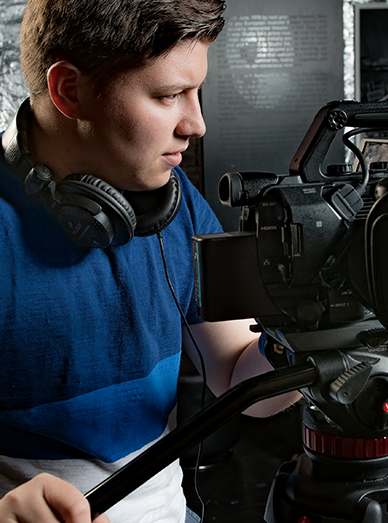
Video intern, New York Magazine // New York City
When New York Magazine invited film major Masen Colucci ’19 back for a second stint in its video department, his answer was an easy “yes.” “I loved the people and the company and wanted to continue to work on the skills that I learned last year,” said Colucci of Bloomingdale, Illinois. In addition to shooting and editing videos, and working as a production assistant, he also pitched story ideas directly to magazine staffers. “My internship helped me realize that storytelling, whether it be through narrative film or digital media, is something that I want to pursue professionally.”
Lights, camera, action: At Kenyon, Colucci took a “Basic Cinematography” course with visiting professor Will Adashek ‘05, a lighting designer, cinematographer and producer based in Los Angeles. “The skills I learned during that class, in terms of navigating different camera, shooting and lighting techniques and different programs, were invaluable.”
Magic hill: “Kenyon teaches you a lot of things you don’t realize that you’re learning while you’re learning them: how to collaborate, how to think innovatively and analyze things, how to become a member of a community. Maybe it’s magic.”
Taking charge: Colucci joined New York Magazine during a pivotal time for the video department, which had just restructured. “They were moving in a new direction, which gave me the opportunity to step up and take on more responsibility than interns typically do. I’m thankful that I had the chance to challenge myself and prove I could handle tasks on my own and be trusted as a member of the team.”
Embrace the unknown: “Your coworkers and supervisors don’t expect you to know everything — you’re an intern for a reason. The best you can do is work hard, show initiative and be curious about learning new skills while developing the ones you have.”
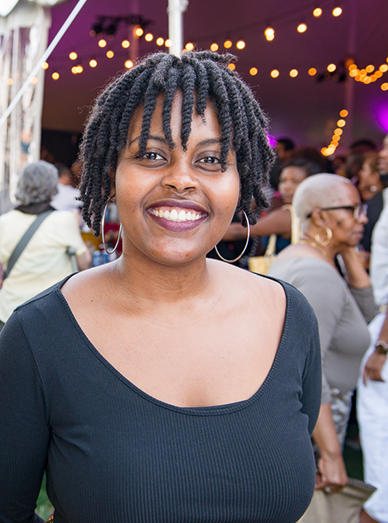
Community affairs intern, Office of the Mayor of New York City // New York City
Although she spent her summer working for the Office of the Mayor of New York City (Bill de Blasio), Selam Bezuneh ’20 spent little time walking the halls of power in Manhattan. As a community affairs intern, her focus was on coordinating events and programs in partnership with local neighborhoods. “I realized my passion for community outreach during my internship, and I intend to pursue that after Kenyon,” said Bezuneh, an anthropology major from Potomac, Maryland.
Dedicated to diversity: “My involvement with programs and organizations dedicated to diversity at Kenyon — the Black Student Union, Sisterhood, REACH, the Diversity Advisors — propelled me to pursue this internship,” Bezuneh said. In fact, she was alerted to the opportunity by former Sisterhood member Wanufi Teshome ’16, who works in the community affairs unit.
Field work: Bezuneh initially thought this internship would push her out of her comfort zone as an anthropology major. “But I quickly realized that I was using a lot of my anthropology background in my work at the mayor’s office,” she said. “Anthropology is very much centered around this idea of learning through studying community behavior and joint action.” Rather, some of her most valuable lessons came from immersing herself in New York City, an unfamiliar location for the D.C.-area native.
Real-world application: “The class ‘Whiteness, Power and Race,’ taught by Edward Schortman, consistently came to mind during my internship. It taught me a lot about the distribution of resources among marginalized communities and gave me the background necessary to ask myself and others tough questions surrounding the topic.”
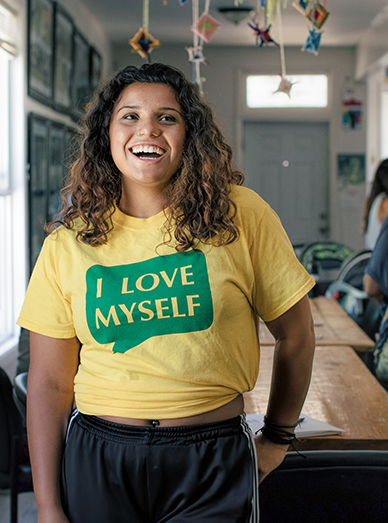
Intern, I Grow Chicago // Chicago
Wearing bright yellow shirts that proclaim, “I love myself,” the staff of I Grow Chicago works to spread a message of hope in a community suffering from high poverty and crime. West Engelwood, where the organization is headquartered, is the third most violent community in Chicago and 48 percent of its residents are hunger insecure. “It’s vital to believe in self-love and to practice it when the world around you is telling you to feel the opposite,” said Rita Carmona ’19 of Lincolnwood, Illinois, who spent a summer interning at the organization’s Peace House.
An immersive experience: “My job was to do all that I could. I tried to get to know everyone in the community better and build trust and relationships,” said Carmona, who joined a group of neighborhood elders on their regular walks. “I helped cook, clean and work in the garden. I taught art and slam poetry to teens and kids. I sat in on a lot of meetings with the co-executive directors to see more of how the organization works from the inside-out.”
Classroom connections: “My classes that educated me about race and the systems in place today were helpful as I saw those things in action in Englewood,” said Carmona, who studies anthropology, Spanish and French at Kenyon. She also drew from her experiences with extracurriculars, like Adelante, Black Student Union, Sisterhood, Diversity Advisors and a slam poetry club called Magnetic Voices. “Kenyon is a place where I’m constantly doing something, so the always beautiful chaos of the Peace House was a place where I could thrive.”
Challenging perceptions: “I took risks in speaking up about using art around the city to challenge our city’s, and our country’s, perceptions of black people, and especially people from Englewood, as dangerous or disruptive. Images of people in the Englewood community with poems they’ve written could help people think more critically about the way they perceive others. The project is still in the works, but I always tried to share new ideas of building up the Peace House.”
Time to shine: “Walk in with an open mind and see what the organization is all about, and jump on opportunities that interest you. There isn’t time to be shy, but there is always time to listen and be critical.”
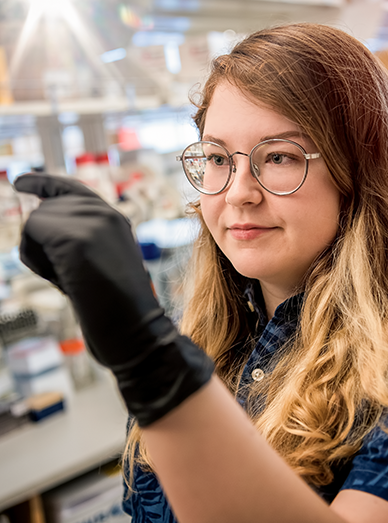
Research intern, Lieber Institute for Brain Development // Baltimore
“Unlocking the mysteries of the brain” is the goal of Baltimore’s Lieber Institute for Brain Development, an organization that works to advance treatments for schizophrenia and other disorders. It’s a mission that neuroscience major Margie Athol ’19 of Pittsburgh eagerly embraced. “This summer has been all about learning and soaking in the experience,” said Athol, who appreciated the insider’s look at pursuing a career in academic research. “There are parts that I love, and parts that I’m not a fan of, but I love problem-solving, collaboration, and doing the work and seeing tangible results.”
Kenyon connections: Athol joins a long line of Kenyon alumni who list Lieber on their resumes, including drug discovery investigator Greg Carr ’04 and research assistants Spencer Byers ’16, Henry Quillian ’17 and Adrienne DeBrosse ’18. She learned about the internship opportunity when fellow neuroscience major Quillian sent the posting to Kenyon professors.
Lab lessons: The autism research Athol is conducting under the guidance of Professor Hewlet McFarlane at Kenyon gave her the foundation to thrive at Lieber. “Kenyon familiarized me with working in a lab environment, and my lecture and lab courses have taught me fundamental principles and skills that allowed me to thrive and learn even more this summer,” said Athol, who had the opportunity to present her Kenyon research at the Midwestern Psychological Association in Chicago.
New possibilities: “Right now I have no idea which career I want to pursue, and that doesn’t scare me at all,” Athol said. She is using experiences like her internship and time as an undergraduate researcher to explore her interests. “My work experiences have given me insight into what I value, what excites me and what is important to me. I’m learning that I’m not just planning for a job, but I’m planning for a life. I have to consider the various aspects that complete a life and how to maximize each one.”
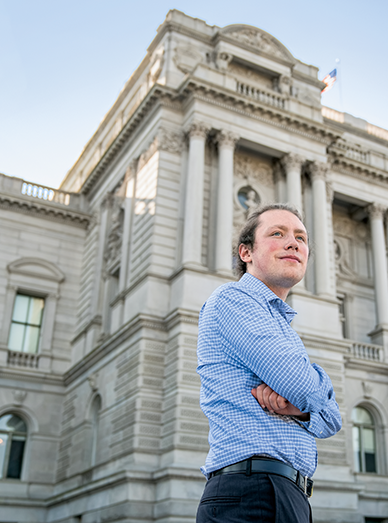
Junior fellow, Library of Congress // Washington, D.C.
When the Library of Congress in Washington, D.C., tasked intern Flynn Shannon ’20 with creating a simple way to access its vast collection of digital images, the math major applied his knowledge of computer science and coding to the development of a Google Chrome extension. “Any time you open a new tab in Chrome, a random image from the Library’s Flickr is now displayed as the background instead of a blank tab. There are also buttons that allow anyone to download the images and share them on social media or email,” said Shannon, who valued the opportunity to manage his own project. “It was really satisfying to get to build a web app from the ground up with very little supervision.”
Applied learning: Shannon credits his scientific computing course on software development with helping him to land the Library of Congress internship. “The experience I gained developing, testing and debugging simple web apps in that class gave me the skills I needed to be considered for this internship and gave me the tools to be successful.”
Change of scenery: Prior to this internship, Shannon had only been exposed to software development in an academic setting. “The workflow in an office is a lot different. Especially in the federal government, where there are a lot more hoops to jump through. It was also really cool to see what goes into promoting new software, and not just how it’s built.”
Meet and greet: “Of the 40 Junior Fellows, five of us were from Ohio, and the Library set up a meeting where we got to discuss our projects with Senator Sherrod Brown.”
Rare find: “On one of my last days, I went to the rare books reading room and got to handle an algebra textbook from 1545 called ‘Ars Magna.’ It’s considered one of the three greatest works of science of the early Renaissance.”
Employers across industries agree that an internship is the most important thing for recent college graduates to have on their resumes. The value of an internship, however, is not only to help land a future job. Done right, it’s an extension of your college classes — providing opportunities to delve more deeply into an area of interest and understand theories in an applied setting. Here are some tips from Kenyon’s Dean for Career Development Holly McCormack on to make the most of this experience.
Do your homework. Study the organization’s website before your first day. Look for recent media mentions and stated goals, as well as how the company talks about its work. Review staff directories or organizational charts. Follow the company on LinkedIn and other social media outlets to stay informed on what it finds valuable and interesting.
Set goals. As an intern, it’s your responsibility to consider what you hope to learn and achieve during your time with the organization. Draft some initial goals and then check with your supervisor to see if those goals are on track with their expectations.
Dig deeper. Maximize your experience by taking the time to research industry influencers, market trends and best practices. Ask your supervisor and colleagues for recommended websites, reports, news feeds and other sources that could help you understand the broader context of your work.
Ask for feedback. Ideally, you’ll receive feedback along the way, as well as a formal evaluation at the end, summarizing your strengths and areas for improvement. If there isn’t a structure or culture in place for assessment, you may need to be proactive by asking your supervisor and colleagues at the end of an assignment if they have recommendations for how you can better accomplish the work at hand.
Network. Joining a company means meeting professionals with a variety of skills and backgrounds, including employees, customers, clients and board members. Ask people whose work interests you if you could chat with them about their positions and overall career paths.
Reflect. As in a class, taking time for critical reflection will help unpack the rich complexity of what you’re learning. Consider your assumptions, values and beliefs about the work going into the internship and how they’ve been challenged, changed or affirmed throughout the experience. How has this internship informed future classes, your professional identity and career prospects?
Kenyon professors shed light on some questions that won’t leave us alone.
Read The StoryPolitical photojournalist Erin Schaff '11 tells the stories behind her headline-making images.
Read The StoryGo behind the music with Nick Petricca '09 of Walk the Moon, which launched at Kenyon.
Read The StoryPhotographers document 24 uninterrupted hours of life on the Hill.
Read The Story